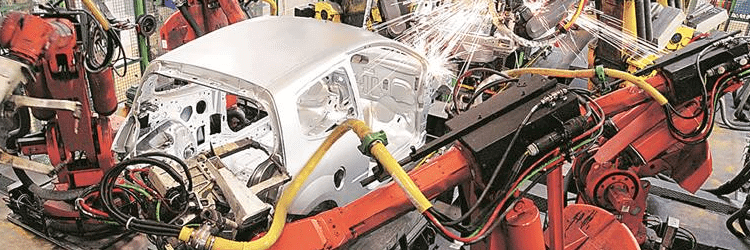
How is GST a Growth Opportunity for Manufacturing?
Implementation of the Goods and Service Tax (GST) is set to be the biggest tax reform hitherto ushered in India. GST will be a destination-based consumption tax that will cover both intrastate and interstate trade and commerce. The transition to GST will particularly impact the manufacturing sector, which currently contributes a quarter towards the national GDP. Furthermore, government initiatives like Make in India, Skill Development, and others aim to substantially increase manufacturing’s effect on the GDP.
The manufacturing sector is uniquely placed in the current taxation structure because it is the only sector that has to pay Excise Duty on its output in addition to the VAT/CST paid by traders. In order to remain competitive after the transition to GST, manufacturers and their consultants need to plan strategically to reap the potential benefits.
How will manufacturing dynamics change in GST era?
The biggest impact GST will have on the manufacturing sector is that it will give birth to a national market for goods. Under the Central Sales Tax (CST) regime, tax is origin-based and therefore its revenue goes to the state from where sale is made, rather than to the state where goods are consumed. As a result, although VAT credit is available for locally procured goods within the state, no such credit is given for goods procured from outside the state on which 2% CST is paid. CST on interstate purchases is thus included in the landed cost of the customer, which adds to the cost of these goods.
Once GST is introduced, there will be neither a 2% CST burden on customers nor a burden on sellers to receive C and F Forms. This CST benefit is of particular significance to the manufacturing industry because, in contrast to trading, the cost of manufacturing inputs is greatly impacted by the cascading CST. After the implementation of GST, manufacturers can procure inputs from the national market without a CST cost for out-of-state procurements. Similarly, the India market will open to manufacturers for their final products: under GST, there will be no need to open depots or branches in different states, as is currently done to avoid the 2% CST cost.
Currently, Excise Duty is charged on basic price and VAT is charged on cumulative amounts thereafter. Under the new GST regime, VAT/CST will no longer apply to the the Excise Duty component of the invoice value.
GST will be based on VAT principles: generally, credits will be available for input GST paid against output GST. The impact on profitability will be significant. Credits will be available for all components of GST, namely CGST, SGST & IGST. While credit of CGST & SGST can be utilized for payment of CGST & SGST respectively, credit of IGST can be utilized for IGST, CGST & SGST.
An important thing to note about this credit is that it will be available only if the claim for such credit matches the output GST paid by the supplier. Manufacturers will therefore need a system to store and verify electronic records.
Lastly, the exemption threshold for Small Scale Industries (SSI) will be lowered from Rs. 1.5 Crorers to just Rs. 20 Lakhs. This should promote SSI industries to expand under GST.
How will automation accelerate the growth?
To succeed under GST, manufacturing units must be able to track and timely claim the input tax credit on capital goods. Reconciling the sales and purchase bills is a prerequisite for such credit claims. There will be a greater need for efficient GST automation software to ensure credit is protected and collected, and to keep profits intact.
In addition, state-specific registration will be required for companies conducting business in multiple states. Automation is critical to the proper handling of such complex logistics, and the filing of multiple Returns.
To summarize, the new GST regime promises to greatly benefit manufacturers that can meet the demands of the stricter compliance requirements. A high level of automation will enable business to succeed.
To learn more about how Avalara can help you with GST automation, contact us through https://www.avalara.com/in/contact-us/
This blog is contributed by CA Mukund Abhyankar.


